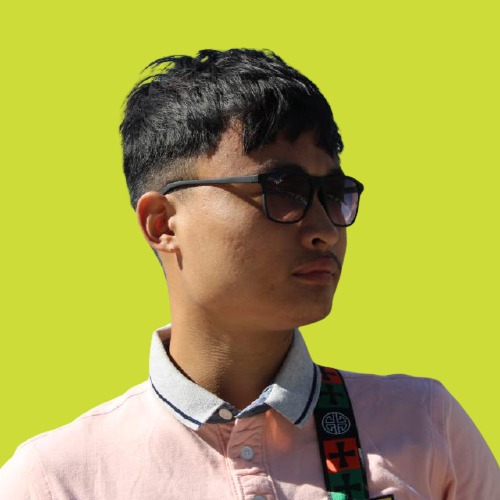如何使用 FabricJS 使多邊形物件對拖放事件做出反應?
我們可以透過建立fabric.Polygon的例項來建立一個多邊形物件。多邊形物件可以由任何由一組連線的直線段組成的封閉形狀來表示。因為它是在FabricJS中的基本元素之一,所以我們也可以透過應用角度、不透明度等屬性輕鬆地對其進行自定義。我們使用event:dragover和event:drop事件來使多邊形物件對拖放事件做出反應。
語法
event:dragover event:drop
示例 1:顯示物件如何對drop事件做出反應
讓我們來看一個程式碼示例,當我們將“h1”元素拖放到新增到畫布的多邊形物件上時,查詢記錄的輸出。我們建立了一個“h1”元素併為其指定了id = "drop-me"。此外,我們使用getElementById()方法返回“h1”元素,並使用addEventListener()方法監聽drop事件。因此,當我們抓住“h1”元素並將其拖放到多邊形物件上時,與該事件相關的屬性將顯示出來。
<!DOCTYPE html>
<html>
<head>
<!-- Adding the Fabric JS Library-->
<script src="https://cdnjs.cloudflare.com/ajax/libs/fabric.js/510/fabric.min.js"></script>
</head>
<body>
<h2>Displaying how the object reacts to drop event</h2>
<p>
You can drop the box on the object and open the console from the dev tools to see that the event name, subTargets and target are being shown
</p>
<canvas id="canvas"></canvas>
<h1
draggable="true"
id="drop-me"
style="
color: black;
background-color: rgb(166, 103, 248);
width: 130px;
height: 70 px;
padding: 10px;">
Drop me
</h1>
<script>
// Initiate a canvas instance
var canvas = new fabric.Canvas("canvas");
canvas.setWidth(document.body.scrollWidth);
canvas.setHeight(250);
// Initiate a polygon instance
var polygon = new fabric.Polygon(
[
{ x: 0, y: 0 },
{ x: 0, y: 150 },
{ x: 150, y: 150 },
{ x: 150, y: 0 },
],
{
left: 100,
top: 60,
fill: "red",
stroke: "blue",
strokeWidth: 2,
objectCaching: false,
}
);
// Adding it to the canvas
canvas.add(polygon);
// Initiating the observe function
function observe(eventName) {
canvas.getObjects().forEach(function (object) {
object.on(eventName, function evt(x) {
console.log("Drop event has been fired", x);
});
});
}
// Using addEventListener and listening for drop event
document
.getElementById("drop-me")
.addEventListener("change", observe("drop"));
</script>
</body>
</html>
示例 2:顯示物件如何對dragover事件做出反應
讓我們來看一個程式碼示例,當我們將“h1”元素拖過新增到畫布的多邊形物件上時,查詢記錄的輸出。當我們拖動物件並將其移動到不同的位置時,就會發生拖動事件。但是,當我們將一個物件拖動到另一個物件上時,就會發生dragover事件。在這裡,當我們將“h1”元素拖過多邊形物件時,事件名稱、目標和子目標將記錄在控制檯中。
<!DOCTYPE html>
<html>
<head>
<!-- Adding the Fabric JS Library-->
<script src="https://cdnjs.cloudflare.com/ajax/libs/fabric.js/510/fabric.min.js"></script>
</head>
<body>
<h2>Displaying how the object reacts to dragover event</h2>
<p>
You can drag the box on the object and open the console from the dev tools to see that the event name, target and subTargets are being shown
</p>
<canvas id="canvas"></canvas>
<h1
draggable="true"
id="drag-me"
style="
color: black;
background-color: purple;
width: 130px;
height: 70 px;
padding: 10px;" >
Drag me
</h1>
<script>
// Initiate a canvas instance
var canvas = new fabric.Canvas("canvas");
canvas.setWidth(document.body.scrollWidth);
canvas.setHeight(250);
// Initiate a polygon instance
var polygon = new fabric.Polygon(
[
{ x: 0, y: 0 },
{ x: 0, y: 150 },
{ x: 150, y: 150 },
{ x: 150, y: 0 },
],
{
left: 100,
top: 60,
fill: "red",
stroke: "blue",
strokeWidth: 2,
}
);
// Adding it to the canvas
canvas.add(polygon);
// Initiating the observe function
function observe(eventName) {
canvas.getObjects().forEach(function (object) {
object.on(eventName, function evt(x) {
console.log("Dragover event has been fired", x);
});
});
}
// Using addEventListener and listening for dragover event
document
.getElementById("drag-me")
.addEventListener("change", observe("dragover"));
</script>
</body>
</html>
結論
在本教程中,我們使用兩個簡單的示例演示瞭如何使用 FabricJS 使多邊形物件對拖放事件做出反應。

廣告

 資料結構
資料結構 網路
網路 關係資料庫管理系統 (RDBMS)
關係資料庫管理系統 (RDBMS) 作業系統
作業系統 Java
Java iOS
iOS HTML
HTML CSS
CSS Android
Android Python
Python C語言程式設計
C語言程式設計 C++
C++ C#
C# MongoDB
MongoDB MySQL
MySQL Javascript
Javascript PHP
PHP